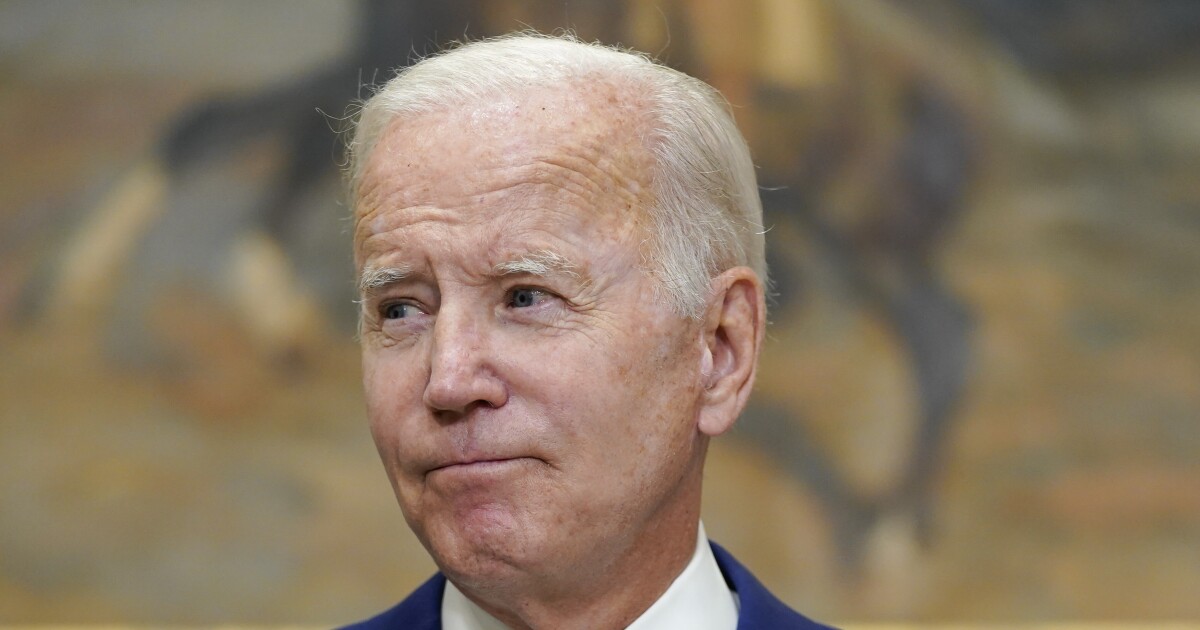

Business and industry groups, long pushing for fewer federal regulations, say a key Biden administration change to federal agency calculations of regulatory costs could have major repercussions.
At the heart of the matter is an executive order issued in April by President Joe Biden that raised the threshold for what is considered a “significant regulatory action” from a $100 million annual economic cost to $200 million.
MANCHIN VOWS ‘UNRELENTING FIGHT’ WITH BIDEN ON INFLATION REDUCTION ACT’S ONE-YEAR ANNIVERSARY
The change is noteworthy because regulations that fall into that “significant” bucket are subject to cost-benefit analysis requirements, which can present hurdles if they don’t fall within the guardrails of having the benefits outweigh the drawbacks and costs.
“What that does in the real world is that it takes a major chunk of regulations out of the more rigorous analysis that is applicable to major federal regulations — you’re immediately taking a chunk of regulations out of that balancing act,” said Chris Netram, managing vice president of tax and domestic economic policy at the National Association of Manufacturers.
Even under the current $100 million threshold, the Biden administration has released a torrent of “economically significant” rules, according to an analysis by the Competitive Enterprise Institute.
The administration has nearly 300 of such regulations in the pipeline and has averaged 97 “economically significant” regulations per year, compared to 69 per year under former President Barack Obama and 49 under former President George W. Bush.
“By raising that threshold as Biden has done, even fewer rules are going to come under the scrutiny that they ought to come under,” Wayne Crews, vice president for policy at the Competitive Enterprise Institute, told the Washington Examiner.
Another change in the White House Office of Management and Budget guidance was to allow consideration of the “global effects of the regulation” when weighing costs and benefits, not just the domestic effects of regulation.
“What you’re effectively doing is allowing agencies to shift the impacts of the regulatory burden to other countries,” Netram said. “So you allow benefit garnered in other countries to outweigh the domestic burden … that seems inconsistent with the role of the federal government.”
The National Federation of Independent Business was among those who pushed back on some of the changes through the filing of a public comment on the matter.
“The circumstances in which a benefit-cost analysis supporting a U.S. government program decision should take account of costs and benefits to non-U.S. citizens residing outside the U.S. is relatively rare, limited perhaps to some diplomatic, military, intelligence, and international trade activities in which the concerns of foreign government reciprocity and retaliation against Americans are present,” the group said in its filing.
Government cost-benefit analysis has evolved significantly over time.
Cost-benefit analysis was first required under President Jimmy Carter and then was bolstered by President Ronald Reagan to require that benefits exceed costs. Then, President Bill Clinton issued an executive order that changed it from requiring that benefits exceed costs to merely that benefits must “justify” costs. Now, Biden is pushing the envelope even further, according to Crews.
“What Biden has done in my view is change the role of OMB from a watchdog of regulation to a promoter of regulation, and that is the essence of all this,” Crews said. “Instead of reviewing regulations with a skeptical eye, the progressives who are in charge now have decided that they’re going to use this regulatory oversight machinery not to put the brakes on regulation, but to advance ‘net benefits’ as progressives see them.”
For the manufacturing sector, Netram said, there have been some positive legislative developments, such as the bipartisan infrastructure law and the CHIPS and Science Act, that have generated momentum for investment in the U.S. manufacturing sector. But on the regulatory side overall, federal agencies have burdened the sector through an “onslaught” of new federal regulation, he said.
“We’re tracking about 100 different regulations across 30 federal agencies that are impacting the manufacturing sector right now,” Netram said.
NAM surveys its members quarterly and recently found that 63% said they are spending more than 2,000 hours per year just working to comply with federal regulations. When asked what they would do if that regulatory burden were decreased, 65% said they would purchase more capital equipment, and nearly half of manufacturers said they would raise wages for workers.
Crews said that he hopes Congress steps in and gets involved with the recent changes to the regulatory process to prevent this sort of rewrite, or at the very least, hold strict hearings where lawmakers can drill down into the depletion of regulatory oversight.
The clock is ticking too. The guidance when Biden issued the executive order was that OMB should issue an updated circular by April of next year.
CLICK HERE TO READ MORE FROM THE WASHINGTON EXAMINER
In response to the changes, NAM has been engaged with every federal agency and the White House to raise the concerns the industry has about the changes and the overall approach to regulatory analysis, Netram said. NAM also filed comments with the Office of Information and Regulatory Affairs expressing the group’s concerns.
“Beyond that, we’re also rallying the entire sector to focus on the regulatory burden because … we represent everything — like oil and gas, tech, pharma — I mean, you name it, we represent everyone,” he said. “We’re bringing the entire industry together right now.”





